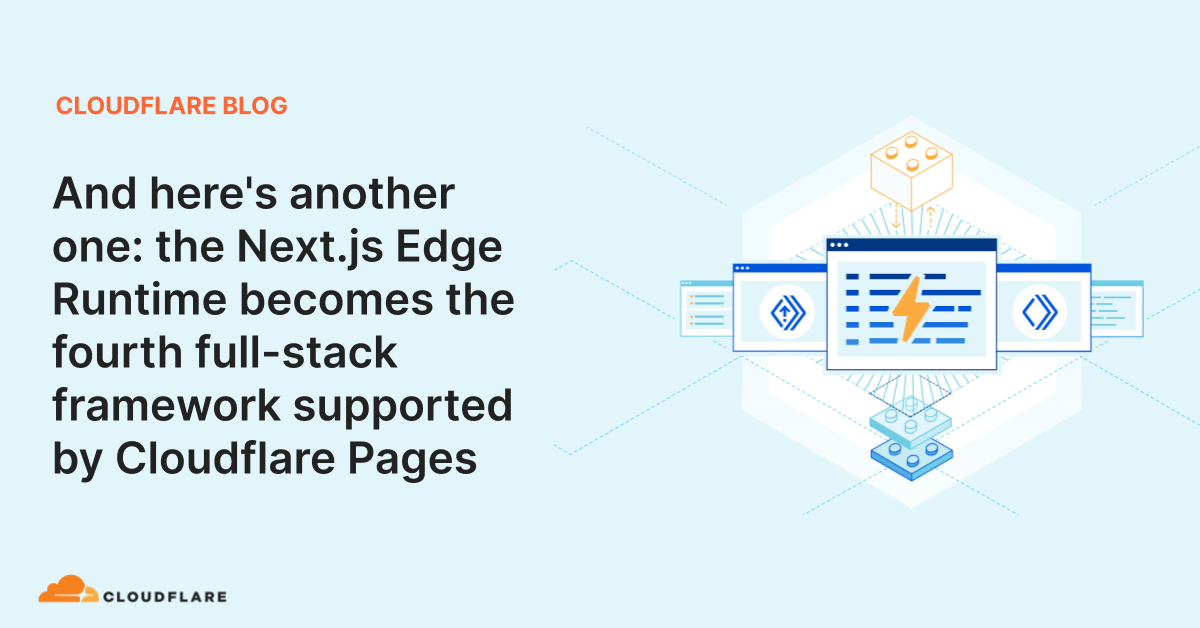5 Best Vercel Alternatives for Next.js & App Router

Vercel has become the go-to platform for hosting modern web applications built with frameworks like Next.js. However, as your application scales, Vercel's pricing model and lack of flexibility can become limiting.
In this article, we explore 5 robust alternatives to Vercel for hosting Next.js and other JAMstack applications:
- Self-Hosting with Coolify - An open-source platform for self-hosting apps with full infrastructure control
- Cloudflare - JAMstack hosting tuned for frontend frameworks like React and Vue
- Firebase Hosting - Google's optimized hosting for modern web apps and PWAs
- Supabase Hosting - Open-source alternative to Firebase with a focus on data
- Google Cloud Run - Managed compute optimized for containerized microservices
- AWS - Amazon's cloud platform for scalable, flexible hosting
We highlight the unique advantages and tradeoffs of each platform to consider. Key decision factors covered include scalability needs, hosting requirements, in-house capabilities, costs, and framework support.
Whether you need more control, lower costs, or customization, this guide explores alternatives aligned to your goals. Read on to determine if it's time to migrate from Vercel, and how to successfully transition to a new platform.
Self-Hosting with Coolify

Coolify is an open-source, self-hostable platform that aims to be an alternative to Vercel, Heroku, and Netlify. It allows you to host, deploy, and manage applications on your own infrastructure.
The main advantage of self-hosting with Coolify is control. You have complete ownership over the servers, bandwidth, and configuration. This makes it easy to optimize hosting to suit your application's specific needs. Coolify also simplifies self-hosting through its easy-to-use interface and configurations.
Coolify supports Docker out of the box. This makes deployment fast and efficient. The platform also has native support for technologies like Next.js, Node.js, MongoDB, and more. Custom domains, SSL, and backkups can be set up with minimal effort.
However, self-hosting does come with its own overhead. Server management, scaling, and maintenance all need to be handled manually. But Coolify makes this process easier through its intuitive UI and detailed documentation.
Coolify is an open-source, self-hostable platform that aims to be an alternative to Vercel, Heroku, and Netlify.
Pros:
- ✅ Open-source
- ✅ Self-hosted
- ✅ 100% free
Cons:
- ❌ Can be confusing for beginners
- ❌ Need your own server or VPS
Best dedicated server
Most people use Hetzner for dedicated servers. They have a good reputation and extremely good prices.
I run my own Coolify instance on a Hetzner server and it works great. I get a 64GB RAM, 16 core CPU, 1TB NVMe SSD, and 20TB bandwidth for only $50/month. That's an insane deal.
Sign up for Hetzner and get a $20 credit to try it out.
Cloudflare

Cloudflare is a good alternative to Vercel for Next.js App router and Page Router. It also is a CDN, DNS, DDoS protection, and security service provider. They have full guide, packages and scripts to support all of Vercel and Next.js features.
They are also a public company with a good reputation and a lot of money to invest in their infrastructure. They have a lot of data centers around the world and they are constantly adding more. So your website will be fast and reliable and your data will be safe and secure.
Cloudflare Edge Workers
Clouflare Workers and Edge is the best Vercel alternative for Next.js App router.
Cloudflare Workers is a serverless platform that enables developers to deploy code at the edge of Cloudflare’s global network. This allows you to run code closer to your users, unlocking a new class of applications that were previously impossible to build.
Read this guide to learn how to deploy Next.js applications on Edge runtime or via static exports.
Clouflare Pages
Cloudflare Pages is a JAMstack hosting platform optimized for frontend frameworks like React, Vue, and Angular. It aims to be a collaborative platform for rapidly deploying modern web applications.
True to Cloudflare's core offering, Pages delivers stellar performance through the Cloudflare network. Every application receives a global CDN, free SSL, and middleware like WAF out of the box. Integrations with services like GitHub and GitLab enable continuous deployment workflows.
A serverless platform, Cloudflare Pages allows you to host static sites without having to manage any infrastructure. Dynamic content can be added through worker-based serverless functions. Custom domains and collaborative team workflows further round out the offering.
However, Pages does have limitations when it comes to dynamic content. For more complex backends and databases, you will need to integrate external services or Workers. So evaluate if Pages matches your stack requirements before adopting the platform.
Shayan from LogSnag also wrote a guide on deploying Next.js 13 App Router to Cloudflare:
LogSnag guide on deploying Next.js 13 (app dir) to Cloudflare Pages
Read GuideFirebase Hosting

Firebase Hosting is a fully-managed hosting platform optimized for modern web apps. It is backed by Google Cloud Platform's global infrastructure.
The key advantage of Firebase Hosting is speed. Resources are served from Google's global CDN and edge caches. Advanced compression and minification further optimize performance. These optimizations make Firebase an ideal hosting solution for PWAs and real-time web apps.
Configuration is also simple with Firebase. Single-page apps can leverage advanced custom routing and headers to enable client-side navigation. Support for localized content allows serving customized experiences to users based on location. Custom domains can also be mapped seamlessly.
On the downside, Firebase Hosting is mostly suited just for static content and websites. Its serverless functions have limitations compared to standalone platforms like Vercel. Costs can also add up quickly for high-traffic sites.
Firebase functions don't support Edge yet, and it will be nearly impossible to use App Router properly with Next.js. But it does work with static exports.
Overall, Firebase Hosting works very well for PWAs, marketing sites, MVP launches, and other static content. But it may not be the best fit for more complex applications.
Supabase: Database, Functions Alternative

Supabase is an open-source alternative to Firebase. At its core is Postgres, an enterprise-grade SQL database. Alongside the database comes a generous free tier consisting of authentication, storage, serverless functions, and more.
Supabase distinguishes itself through its focus on data and community-driven development. Self-hosting capabilities allow you to deploy Supabase's suite of products within your own infrastructure. This maintains data ownership while still leveraging Supabase's tools.
Hosting Supabase yourself puts you in full control. You can optimize hosting, security, and scale to suit your needs. Detailed guides make self-hosting straightforward even for smaller teams. Supabase can be deployed with Docker, Kubernetes, and other popular platforms.
That said, self-hosting does require setting up and managing your own Postgres database. Similarly, scaling, backups, and infrastructure maintenance add overhead for your team. So evaluate if you have the resources to self-host before going down this route.
As a Vercel alternative, Supabase is compatible with Next.js 14 and is a great choice for teams that want to own their data and infrastructure. But you'll still need to host your frontend elsewhere. Supabase is also a good fit for teams that want to self-host Firebase-like database and functions.
Google Cloud Run

Part of Google Cloud Platform, Cloud Run is a managed compute platform optimized for containerized microservices. It is specially designed to run stateless applications that respond to web requests or cloud events.
The key value of Cloud Run is instant scalability. There are no instances or servers to manage. Applications automatically scale up and down based on traffic, with support for zero idle instances. This makes Cloud Run cost-efficient while stillmaintaining high performance.
Cloud Run abstracts away infrastructure complexity through its managed offering. Developers can focus on writing code rather than configuring servers. Repeatable deployments become effortless using Cloud Run's flexible container model.
For Next.js, Cloud Run is a great choice for hosting static exports. It also works well for microservices and APIs. Since Cloud Run is just a Docker container, you can deploy any application that can be containerized, including Next.js.
Here is a guide on deploying Next.js to Cloud Run.
AWS
Migrating Away From Vercel

Once you've selected an alternative platform, the next step is migrating away from Vercel. This process will vary based on your alternative of choice:
-
Self-hosting platforms like Coolify will require setting up your own hosting infrastructure from scratch. Follow detailed platform guides to get servers and databases deployed before configuring your application.
-
Managed services like Firebase Hosting allow importing existing projects with minimal changes. In some cases, just pointing your DNS can enable a successful migration.
-
Hybrid solutions like self-hosted Supabase will involve deploying the new platform on infrastructure you control before migrating data and applications over.
Testing is critical regardless of which path you choose. Be sure to evaluate performance, compatibility, and staging environments before decommissioning Vercel fully. Gradual cutover migration strategies help de-risk potential issues.
With careful planning and testing, migrating off Vercel to an alternative hosting platform can be straightforward. Reach out to customer support teams if you have any questions about the process for your platform of choice.
Conclusion
Vercel has undoubtedly accelerated web development through its developer-friendly workflows. However, as needs grow, the limitations of Vercel's pricing and lack of control can hinder scaling.
Thankfully, as highlighted in this guide, there are several compelling alternatives available. Self-hosted platforms like Coolify give you outright infrastructure control. Managed services like Firebase and Cloudflare Pages trade control for convenience and automation.
Evaluating your specific requirements around scale, capabilities, and budget will reveal the alternative best suited for your needs. With mindful migration planning, you can successfully move from Vercel to the platform of your choice.
The JAMstack and serverless revolutions have brought no shortage of innovation to web development. As the ecosystem continues to evolve, expect more exciting alternatives to Vercel and other platforms to emerge.
Ilias is a SEO entrepreneur and marketing agency owner at MagicSpace SEO, helping small businesses grow with SEO. With a decade of experience as a CTO and marketer, he offers SEO consulting and SEO services to clients worldwide.

Snyk is a popular tool for code security, but it's not the only option. Here are 10 alternatives to Snyk that you may want to consider.

We explore awesome alternatives to Headshot Pro for professional headshots.

Xnapper is the best screenshot app for Mac users. Learn how it can help you capture high-quality screenshots quickly and easily.
